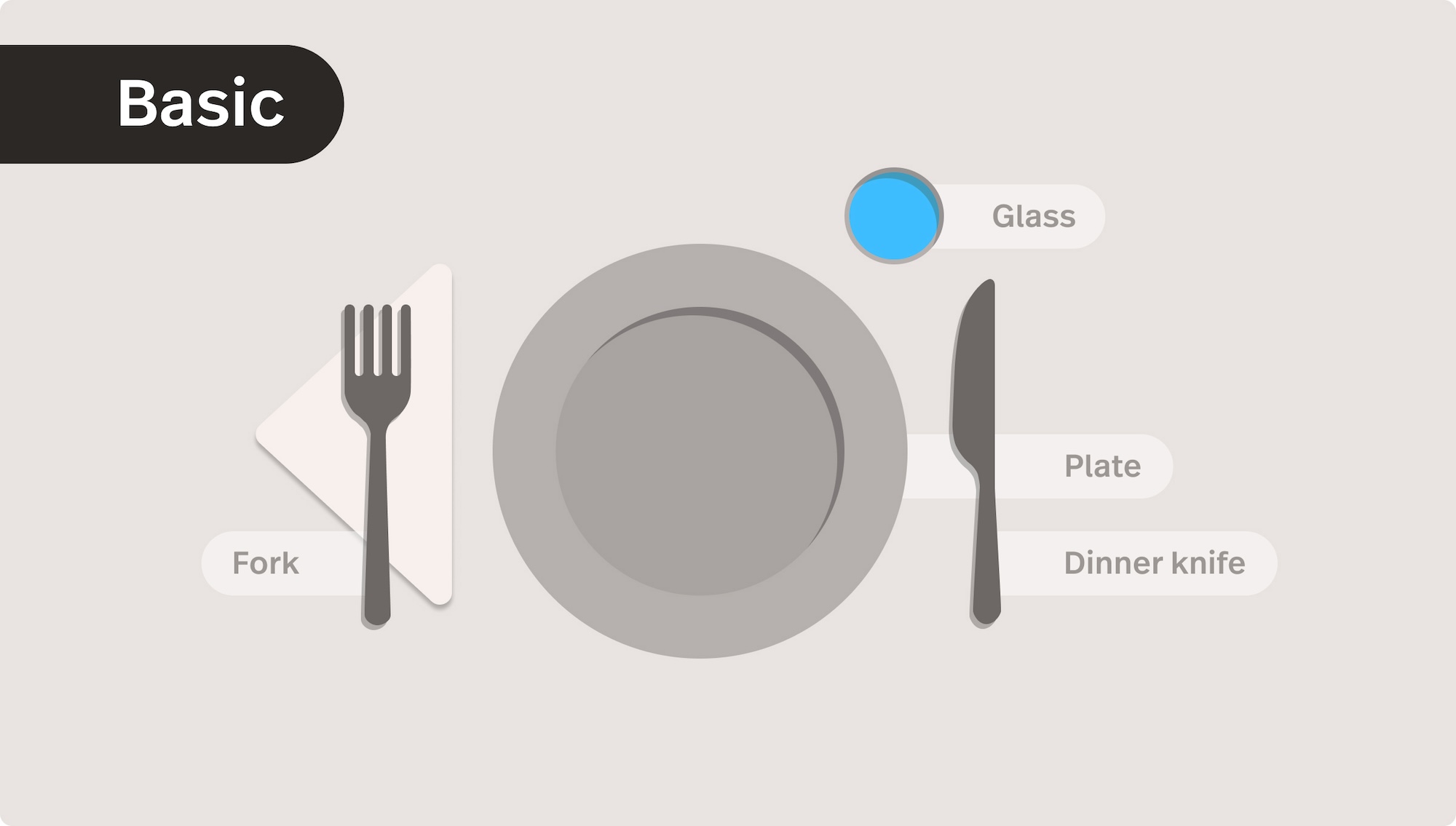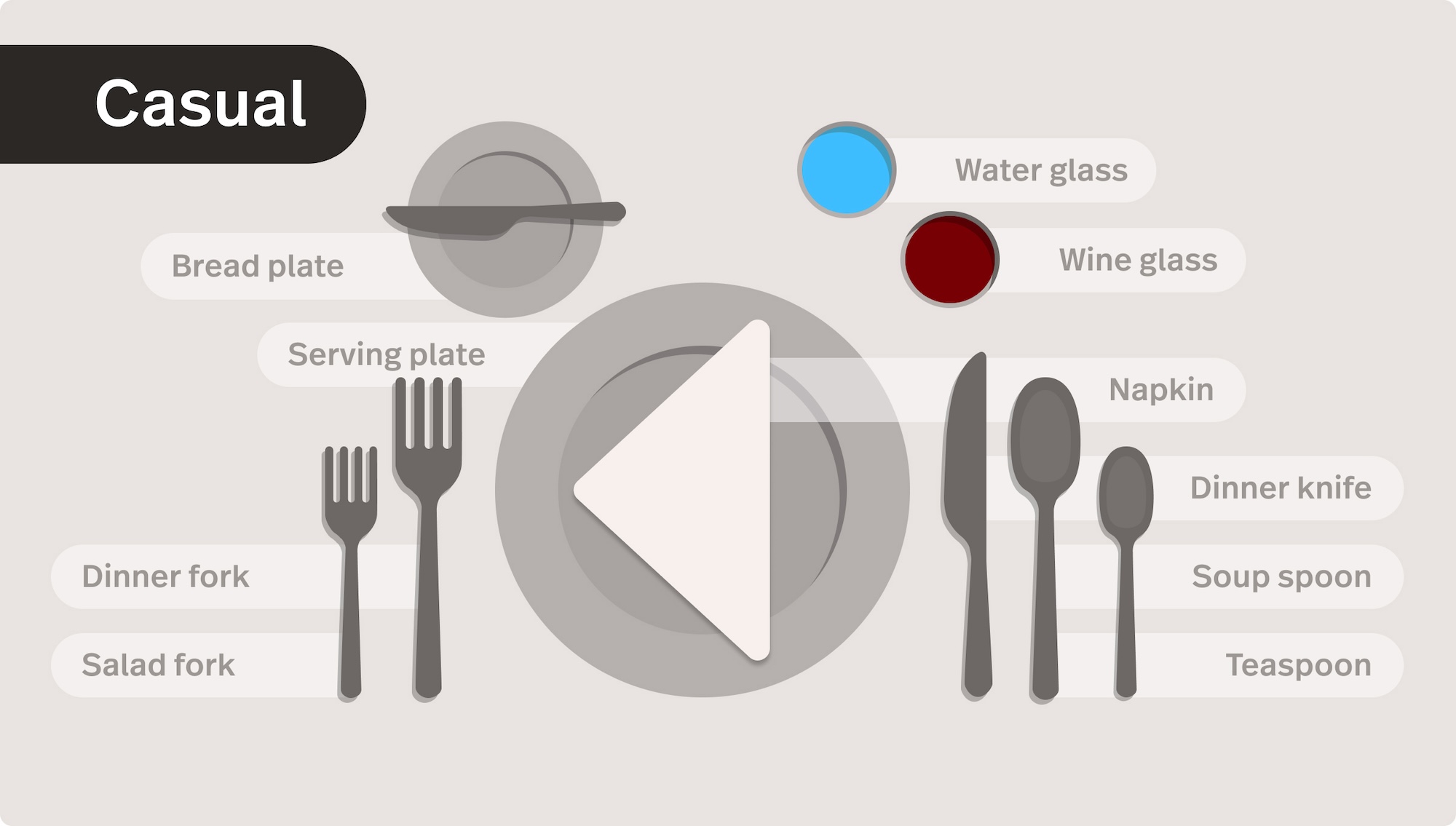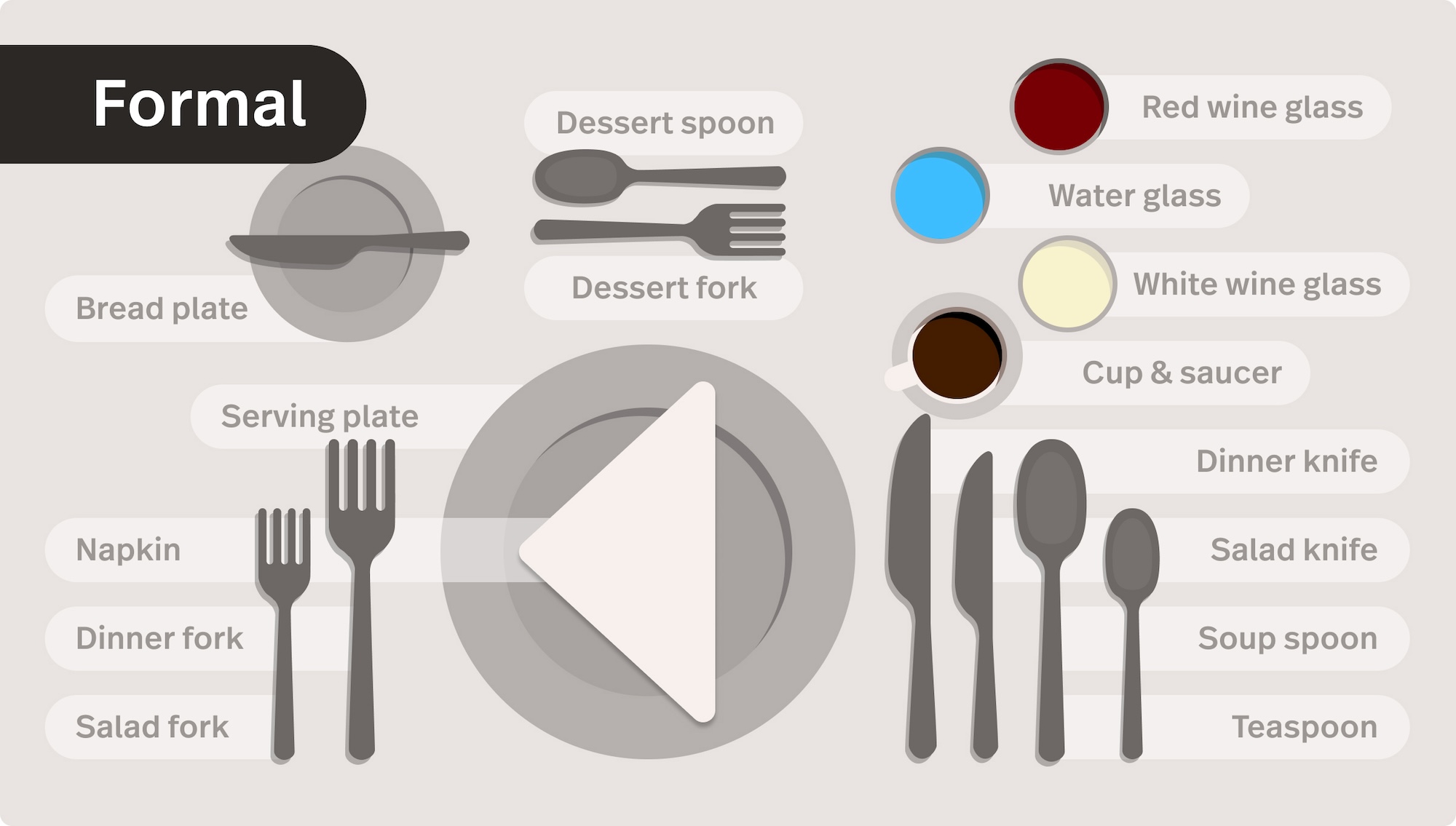
In the world of dining, first impressions are everything, and a well-set table plays a pivotal role in shaping those impressions.
Whether you run a casual café or a high-end restaurant, the way you arrange your tables reflects your establishment’s attention to detail and commitment to providing an exceptional dining experience.
In this guide, we’ll explore the essentials of restaurant table setting, covering everything from the importance of proper placement to the different types of settings for breakfast, lunch, and dinner. We’ll also explore common mistakes to avoid and provide tips for training your staff to ensure consistency and professionalism.
Let’s dive in.
- Why is table setting important in restaurants?
- What are the different types of table settings?
- What are the rules for setting a table for breakfast, lunch, and dinner?
- What are the common mistakes to avoid in table setting?
- How can you train your staff to set tables correctly?
Why is table setting important in restaurants?
Once your guests have been seated, one of the first things they’ll notice is the table setting–so it’s crucial to get it right to set the tone for their dining experience.
A meticulously arranged table speaks volumes, conveying a sense of order, cleanliness, and meticulous attention to detail. Every utensil, napkin, and glass in its rightful place ensures your guests have everything they need within easy reach.
The ambience of your restaurant is also influenced by how the tables are set. Whether you run a casual bistro or a fine dining establishment, the table setting should reflect your theme and level of formality, creating a cohesive and inviting atmosphere.
In fine dining and upscale establishments, table setting is more than just a necessity—it’s part of your brand identity. It signifies quality, sophistication, and a high level of service, reinforcing your restaurant’s reputation as a premier dining destination.
For your serving staff, a considered and consistent table setting streamlines service. It allows them to efficiently identify and address any missing elements, ensuring that each table is perfectly prepared for new guests.
Above all, a well-set table makes your guests feel cared for and comfortable. They won’t need to ask for missing items, and they’ll appreciate the seamless and thoughtful service.
What are the different types of table settings?
Table settings in restaurants can vary depending on the type of dining experience being offered. Each type of table setting enhances the dining experience by providing the appropriate tools and ambience for the meal being served.
Here are some of the three most common types.
Basic table setting
The basic table setting is a simple and functional arrangement typically used in casual dining settings. You’ll often see this type of table setting in cafes, diners and casual restaurants.
- Plate: Centered in front of the guest
- Napkin: Placed to the left of the plate
- Fork: To the left of the plate, under the napkin
- Knife: To the right of the plate, with the blade facing the plate
- Spoon: To the right of the knife (if needed)
- Glass: Above the knife

Informal table setting
An informal or casual table setting is slightly more elaborate than the basic setting and is suitable for casual restaurants with multiple courses. Contemporary restaurants looking to elevate their dining room decor often opt for this type of setting.
- Plates and napkin: Center the serving plate, fold the napkin and place it neatly on top of the plate. A bread plate should be placed on the top left of the serving plate.
- Forks: Positioned to the left of the serving plate and below the bread plate, place the salad fork on the outside and the dinner fork next to the serving plate.
- Knives: Place the dinner knife to the right of the serving plate, with the blade facing the plate, and the butter knife on the bread plate.
- Spoons: If you offer soup, the soup spoon should be on the outside of the dinner knife.
- Glassware: The water glass should go above the knife, and the wine glass should go to the right of the water glass.

Formal table setting
Now, things get a little bit more complicated. Formal table settings are used for fine dining or special occasions, with multiple courses and a sophisticated arrangement. This setting is designed to accommodate a six-course meal, including an appetiser, soup, salad, a main dish, a fish/meat course, and dessert.
- Tablecloth: Place an ironed tablecloth on the table
- Crockey: Place the service plate, also known as a charger, in the centre. The appetiser plate goes on top of the service plate, and the soup bowl is placed on top of the appetiser plate. The bread plate should be placed on the top left of the serving plate.
- Forks: To the left of the plate, arrange the forks from left to right, starting with the one used first, the salad fork followed by the dinner fork next to the plate.
- Napkin: Fold the napkin and place on to the left of the forks.
- Knives: To the right of the plate, arrange the knives from left to right, starting with the dinner knife with the blade facing the plate, followed by the the salad knife.
- Spoons: Arrange to the right of the knives, with the soup spoon next to the salad knife and the taspoon on the outside.
- Dessert utensils: Place a dessert fork and spoon horizontally above the plate.
- Glassware: Place the water glass directly above the dinner knife, the white wine glass should go below the water glass and slightly to the right. Place the red wine glass above the white wine glass and slightly to the right.
- Coffee cup: Place a cup and saucer above the soup spoon and slightly to the right.

What are the rules for setting a table for breakfast, lunch, and dinner?
Setting a table correctly for breakfast, lunch, and dinner in a restaurant involves following certain rules to ensure guests have the perfect dining experience.
Here are the guidelines for each meal:
Breakfast table setting
When setting the table for breakfast service you should start with the basic table setting. Once this is in place, set a cereal bowl on top of the plate and add a bread plate with a butter knife on the left side above the fork. Finally, add a cup and saucer above the knife for coffee or tea.
Buffet service is also common for breakfast in most hotels and some larger restaurants. Buffet service is less formal, allowing guests to serve themselves from a variety of dishes. If you’re offering some form of buffet service for breakfast, follow these guidelines:
- Plates: Stacked at the beginning of the buffet line
- Utensils: Either wrapped in a napkin or placed at the end of the buffet line
- Glasses: Located at the drink station
- Napkins: Placed with the utensils or at the end of the line
- Serving Utensils: Placed with each dish
Lunch table setting
For lunch service, start with the basic setting and add a bread plate and a butter knife on the left side above the fork. If you are serving soup, place the soup bowl on top of the plate. Finally, add a wine glass on the right side above the knife.
Dinner table setting
Depending on your style of restaurant, you will choose either the basic, informal or formal table setting for your dinner service.
Universal tips for all meals
No matter if you’re setting the table for breakfast, lunch or dinner, keep these four tips in mind when laying a table.
- Consistency: Ensure each place setting is uniformly arranged
- Cleanliness: Utensils, plates, and glassware should be spotless and polished to perfection
- Symmetry: Maintain visual balance and symmetry for an appealing presentation
- Accessibility: Position all necessary items within easy reach for guests
By following these guidelines, you can create a pleasant and professional dining experience for your guests, whether they are enjoying breakfast, lunch, or dinner.
What are the common mistakes to avoid in table setting?
When setting a table, especially in a restaurant, attention to detail is crucial. Here are nine common mistakes to avoid to ensure a seamless and professional table presentation.
1. Incorrect utensil placement
- Mistake: Placing utensils in the wrong order or on the wrong side of the plate.
- Solution: Ensure forks are placed on the left, and knives and spoons are on the right. Arrange utensils in the order they will be used, starting from the outside and working inward.
2. Misaligned glassware
- Mistake: Glasses that are misaligned or placed too far from the main plate.
- Solution: Align glassware neatly above the knives. Start with the water glass directly above the knife, with wine glasses arranged to the right in order of use.
3. Napkin placement
- Mistake: Placing the napkin incorrectly or in a way that hinders access to utensils.
- Solution: Place the napkin to the left of the forks or neatly on the plate, ensuring it does not interfere with the rest of the setting.
4. Overcrowding the table
- Mistake: Using too many items or overcrowding the table, making it uncomfortable for guests.
- Solution: Only include necessary items for the meal being served. Keep settings simple and organised to allow guests adequate space.
5. Dirty or streaked utensils and glassware
- Mistake: Using utensils or glassware that are not spotless.
- Solution: Ensure all tableware is thoroughly cleaned and polished before setting the table.
6. Inconsistent table setting
- Mistake: Variations in table settings throughout the dining area.
- Solution: Ensure your team are wellversed in table setting to maintain consistency across the restaurant to uphold standards and provide a uniform dining experience. Ensure the same staff are responsible for table setting to also maintain consistency.
7. Improper bread plate and butter knife placement
- Mistake: Placing the bread plate and butter knife incorrectly or forgetting them entirely.
- Solution: Place the bread plate above the forks with the butter knife laid horizontally across it, ensuring it is easily accessible.
8. Uneven spacing between place settings
- Mistake: Unevenly spaced place settings that disrupt the visual appeal and function.
- Solution: Ensure equal spacing between each setting to provide uniformity and adequate elbow room for guests. You should also ensure the bottom of the cutlery is in line with the bottom of the plate.
9. Forgetting special items
- Mistake: Omitting special items such as chopsticks, seafood forks, or specific glassware needed for particular dishes.
- Solution: Anticipate menu needs and ensure all special items are included in the table setting as required.
By avoiding these common mistakes and paying close attention to detail, you can create a polished and professional table setting that enhances the dining experience for your guests.
How can you train your staff to set tables correctly?
Training your front of house staff and bussers to set tables correctly is essential for maintaining consistency and professionalism in your restaurant. Here’s a step-by-step guide to effectively train your team:
Establish standards and expectations
Clearly communicate your standards and expectations for table settings. Reinforce the importance of attention to detail and consistency and conduct regular checks to ensure table settings meet established standards. Use these checks as training opportunities to reinforce proper techniques.
Provide comprehensive training materials
Develop a handbook with step-by-step instructions for each type of table setting and hand these out to your team and new starters. Include common mistakes to avoid and tips for efficiency. You can also include detailed diagrams and photos showing proper table settings for the different services in your restaurant e.g. lunch and dinner.
Conduct hands-on workshops
Organise training session where an experienced staff member or manager shows the correct way to set a table. Explain each step and its importance then allow staff to practice setting tables under supervision. Offer constructive feedback and guidance to ensure they understand the process.
As part of these workshop, you can also conduct role-playing exercises where staff practice setting tables in various scenarios, such as a busy service rush or a special event.
Regularly refresh training
Schedule regular refresher courses and training sessions to keep skills sharp and introduce new techniques or standards. Ensure training materials are regularly updated to reflect any changes in menu, service style, or table setting standards.
It’s also important to foster an environment where staff can share ideas and suggestions for improving table-setting techniques and efficiency.
Create checklists
Provide a checklist outlining each item needed for the table setting, including utensils, glassware, plates, and napkins. Ensure staff cross-checks each table against the list. The checklist can also be used for quality control, such as checks for cleanliness, alignment, and consistency.
By providing comprehensive training, using effective teaching methods, and fostering a culture of continuous improvement, you can ensure your team is well-equipped to set tables correctly and contribute to an outstanding dining experience for your guests.
Set tables like a pro
In a restaurant, a meticulously set table is more than just a functional necessity—it is a reflection of your venue’s quality and attention to detail. From bistros to fine dining, a properly arranged table enhances the dining experience, making guests feel valued and comfortable. Ultimately, a well-set table sets the stage for memorable dining experiences that leave a lasting impression on your guests.

News you care about. Tips you can use.
Everything your business needs to grow, delivered straight to your inbox.


